Juniata River Canal Driving Tour
Wendy Royal Winter 2026
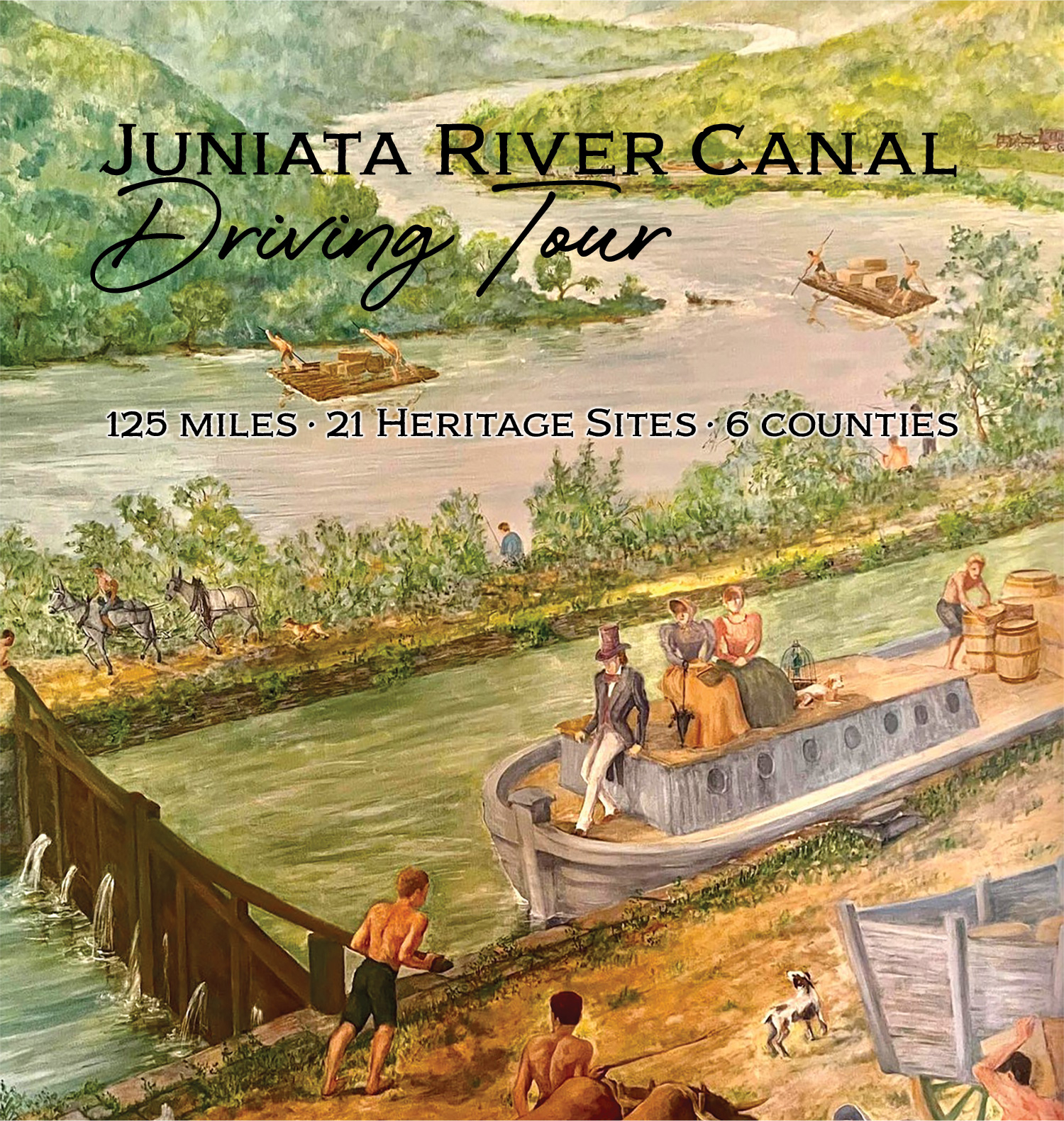
The Lewistown Narrows 1840 painting by Harrison Frerich depicts Canal Park in Mifflintown, PA
The history of transportation in the United States runs straight through Pennsylvania. Long before modern tools and technology, engineers faced monumental challenges—none greater than the mountains that stood between Philadelphia and Pittsburgh.
To compete with New York’s successful Erie Canal, which connected the Atlantic Ocean to the Great Lakes, Pennsylvania officials sought a way to link their two great cities.
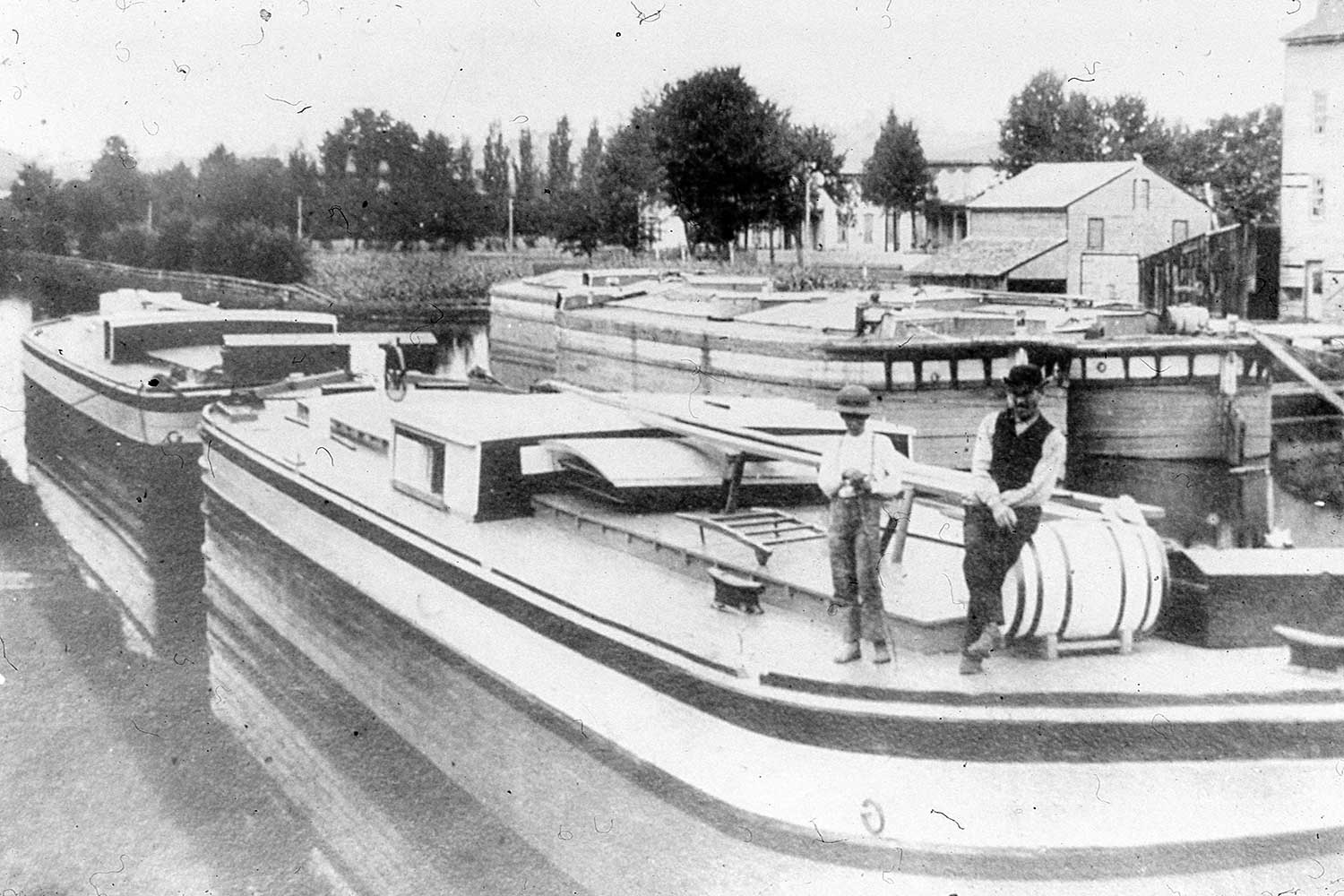
Barge on the Juniata River Canal
In the 1820s, canals were the most efficient method for hauling freight, dramatically reducing transportation costs and consumer prices. A single canal barge could carry 30 tons of cargo, while a horse-drawn wagon managed only a fraction of a ton.
Engineers proposed the Pennsylvania Main Line Canal, designed to connect Philadelphia to Columbia (Lancaster County) by rail, then continue along the Susquehanna and Juniata Rivers to Hollidaysburg. From there, the Allegheny Portage Railroad would carry travelers and freight over the mountains to Johnstown, where canals again followed the Conemaugh, Kiskiminetas, and Allegheny Rivers to Pittsburgh.
While the plan was ambitious, one stretch proved especially treacherous—the Lewistown Narrows, about ten miles south of Lewistown. Here, the Juniata River sliced through mountains that lined the river with sheer rock walls hundreds of feet high. Construction through the Narrows was both dangerous and costly.
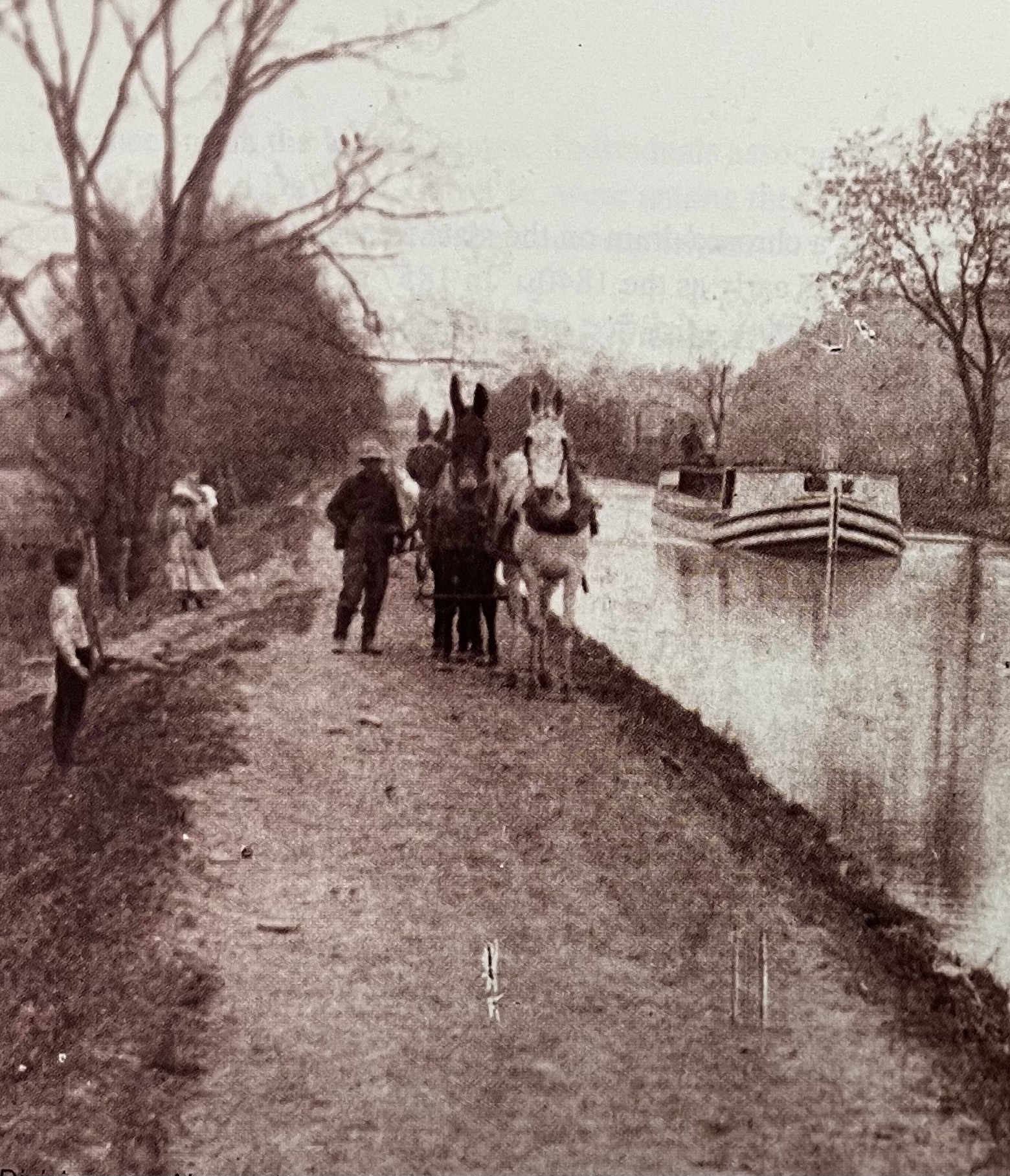
Mules on the tow path pulling the canal boat, by Jefferson County Historical Society
By 1826, engineers concluded the only option was to carve directly through solid rock. Facing immense hardship, workers—primarily Irish immigrants—completed the section between Perry County and Lewistown in 1830. Still, ice jams and flooding continued to plague the canal.
The cost, originally estimated at just under $600,000, ballooned to $2.5 million, straining the state treasury. Ongoing repairs and maintenance costs ultimately forced Pennsylvania to sell the Main Line to the Pennsylvania Railroad. Although the railroad initially invested in canal operations, it soon proved unprofitable, and the Juniata Division was shut down in the 1870s.
Despite its financial shortcomings, the Main Line Canal was pivotal in Pennsylvania’s transportation history. It spurred economic development across Central Pennsylvania, transforming once-undeveloped regions. Towns such as Lewistown, Hollidaysburg, and Huntingdon flourished along the route, and the Pennsylvania Railroad later used much of the canal’s path for its own main line.
Today, the legacy of the Juniata Division lives on as part of America’s 250th Anniversary Celebration. Beginning January 1, the Juniata River Canal Driving Tour will open to the public. Destination marketing organizations covering six counties—along with historical societies and nonprofits like the Allegheny Ridge Corporation—have joined forces to bring this heritage trail to life.

Map of the 13-stop Juniata River Canal Driving Tour by Ryan Cherry
The 125-mile driving tour includes 13 stops, each offering a unique glimpse into the region’s canal era. Visitors can explore interpretive signage, hiking trails, historical landmarks, and art installations honoring the canal’s legacy. Some sites remain in ruins, so proper footwear is recommended.
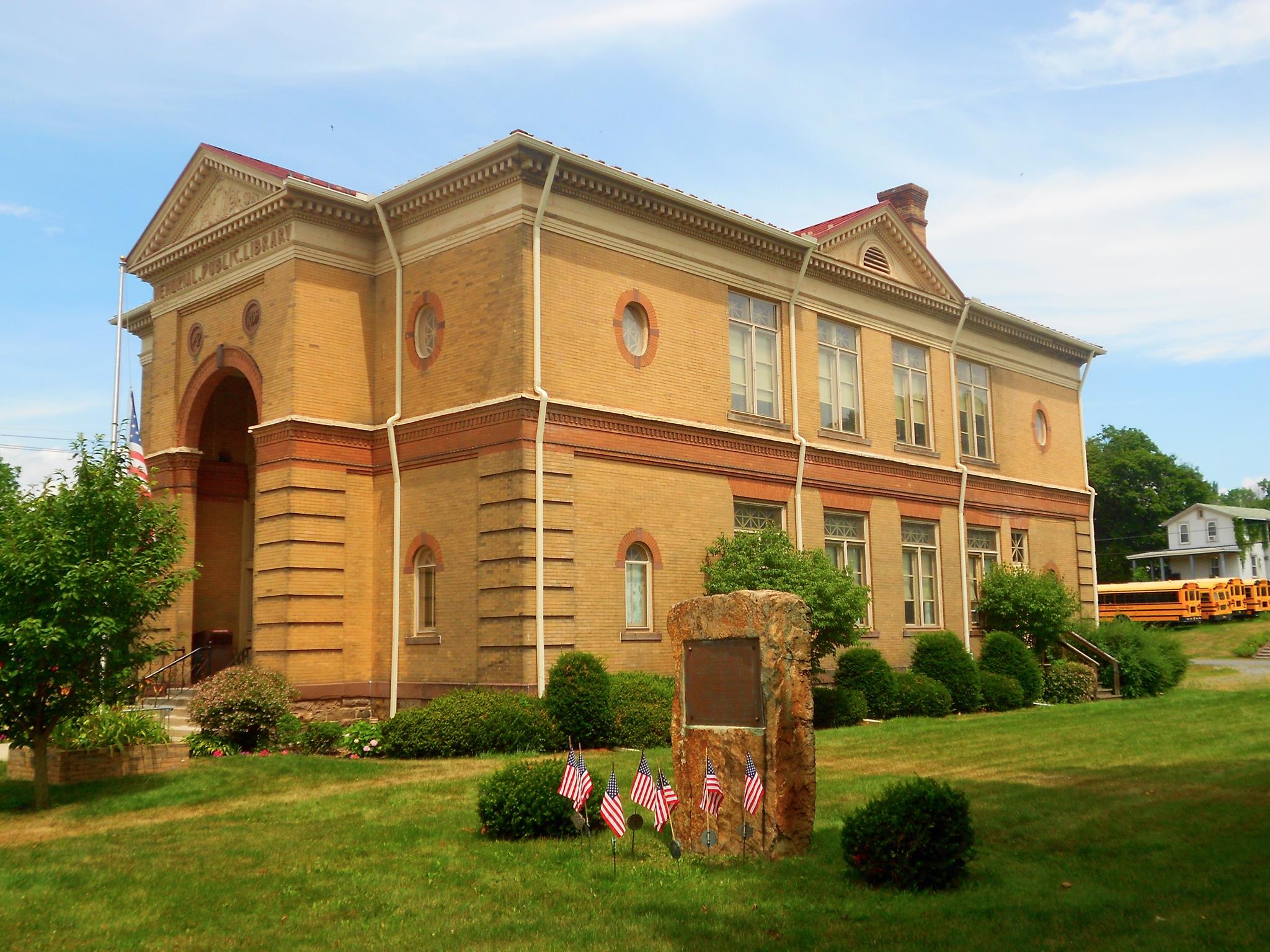
Hartslog Heritage Museum, Alexandria, PA
Beyond its historical appeal, the trail offers abundant opportunities for outdoor recreation—hiking, boating, fishing, and camping—along with museums, restaurants, and boutique shops in nearby towns.
Matt Price, founder of the Juniata River Paddlers and executive director of the Raystown Lake Region (Huntingdon County), spends many evenings with his fellow paddlers somewhere on the Juniata. “The scenery people will experience on this tour is remarkable,” he says. “It’s truly the stuff of world-famous paintings,” referencing Thomas Moran’s 1864 masterpiece, Juniata Evening.
There are three stops in Huntingdon County, each highlighting the region’s canal history.
To the west, Blair and Cambria Counties feature two canal sites each. At Canal Basin Park in Hollidaysburg, interactive exhibits, historic displays, and Heritage Hikes led by the National Park Service bring the 19th century to life.

Allegheny Portage Railroad National Historic Site, Gallitzin, PA
In Cambria County, the towns of Gallitzin—home to the Allegheny Portage Railroad National Historic Site—and Portage, with its Portage Station Museum, tell the story of the settlers’ westward journey. The middle section of the trail features the Lewistown Narrows Canal Park in Mifflintown, where visitors can view Lock 13 and the Lockkeeper’s House. A half-mile walking trail follows the original towpath, offering a tangible link to the past. The S.H. Rothermel Walking Trail at Victory Park in Lewistown runs 1.4 paved miles along the Juniata River, complete with scenic benches and photo-worthy views.
At nearby Waterside Campground, visitors can experience the canal by boat. The site is open to the public but operates on limited hours, so advanced planning is recommended.
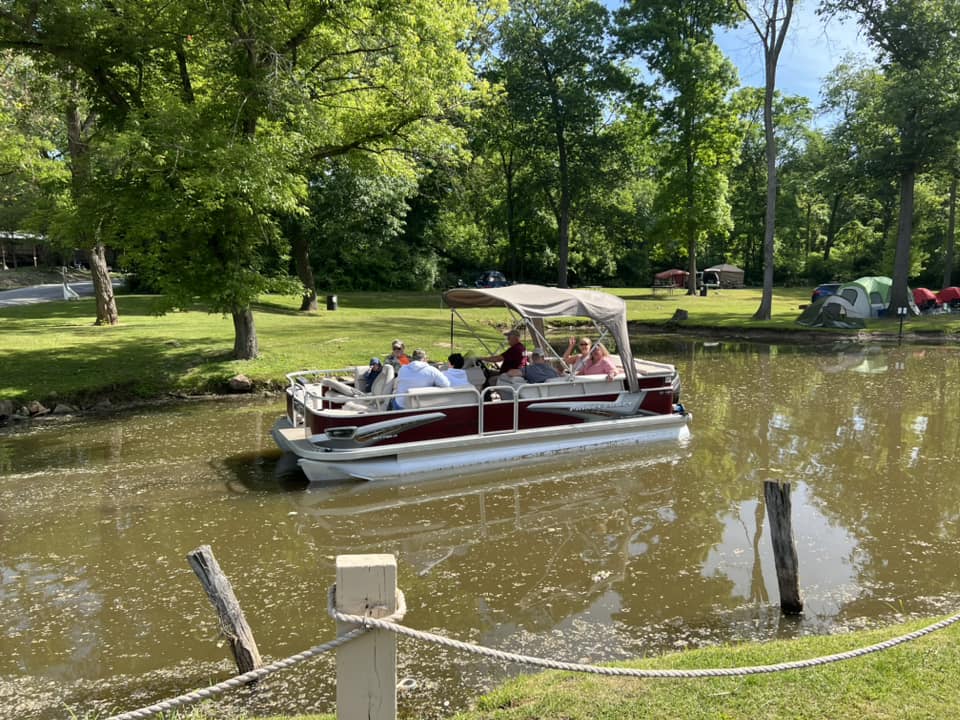
Part of the Juniata River Canal runs through Waterside Campground in Lewistown, PA.
Instrumental in launching the driving trail, Jenny Barron Landis, executive director of the Juniata River Valley Visitors Bureau remarked, “The fact that we have any of this left is a miracle,” she says. “The railroad was built right on top of it.”
Depending on your route, the tour begins—or ends—in Duncannon, Perry County, at the confluence of the Susquehanna and Juniata Rivers. Once considered the “gateway to the West,” Duncannon is home to the Clarks Ferry Tavern, built in 1789. The tavern served as a stagecoach stop, inn, post office, and Civil War recruiting office until the late 1840s. Today, restoration plans aim to transform it into a Welcome and Interpretive Center for modern travelers.

Historic 1789 Clarks Ferry Tavern in Duncannon, PA in 1810 and today.
The area also attracts hikers, thanks to its access point to the Appalachian Trail and stunning views from Hawk Rock.
While history links towns along the scenic Juniata River Canal Driving Trail, families will also find countless opportunities to reconnect with nature and explore local attractions—from amusement parks to Raystown Lake. For those who prefer a car-free adventure, Amtrak has stops in some of the trail towns, making it easy to park and ride.

Climbing up the ladder to the slide on pontoon boat on Raystown Lake, PA
For more information on the Juniata River Canal Driving Trail visit juniatarivercanaltour.com
Links to information on things to do and places to stay can be found by linking the QR code to the right.

SHARE
PRINT